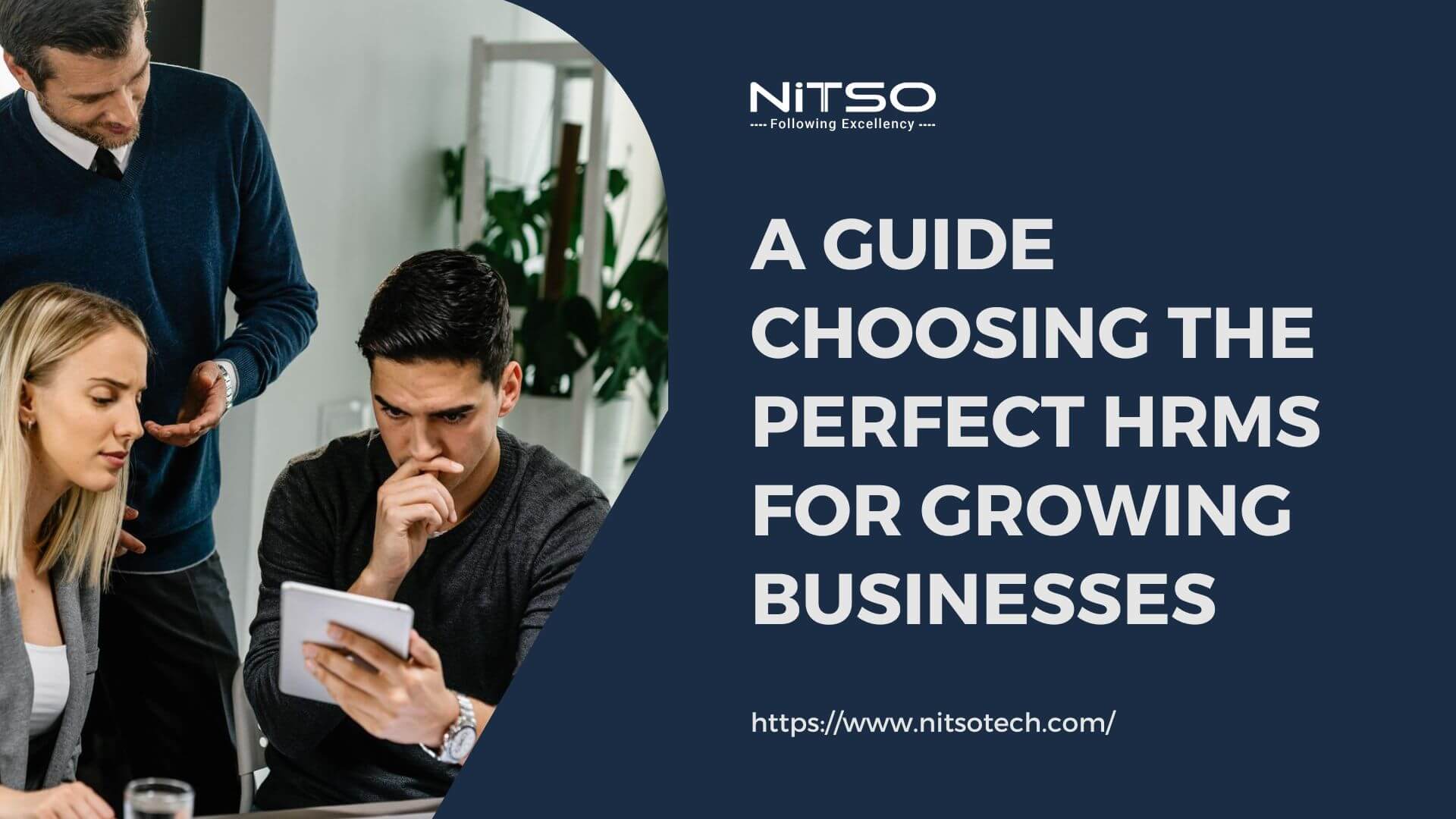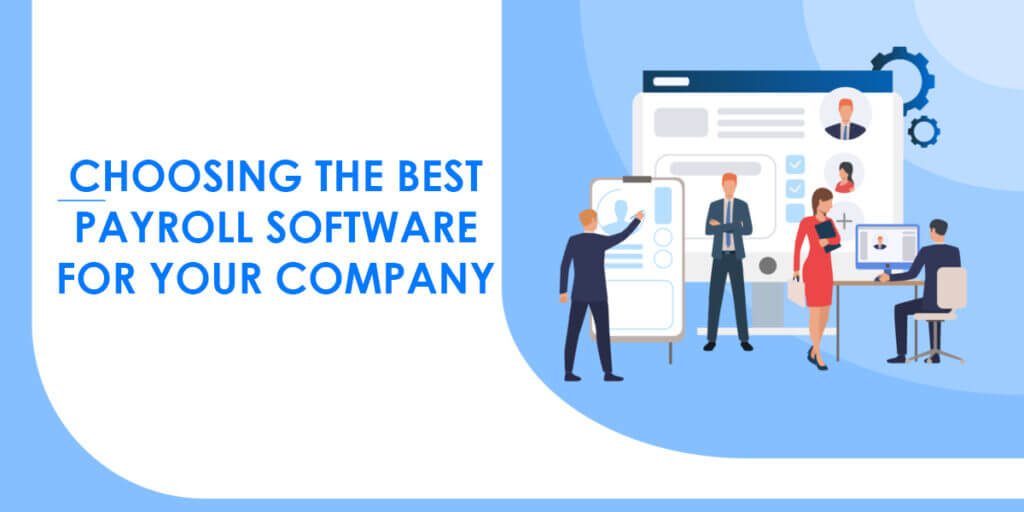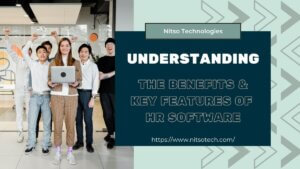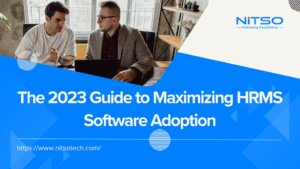What is the most crucial component for managing a growing business in India while keeping employees satisfied? Choosing the perfect HRMS (Human Resource Management System). With fierce competition for talent and dynamic compliance standards, organizations cannot afford anything less than a stellar HRMS to support critical workforce functions.
Yet executives often overlook thoughtfully evaluating their options and regret it later when the system falls short of serving organizational demands. An inadequate HRMS hampers everything from productivity and analytics to employee experiences, eventually hindering business growth.
This comprehensive guide equips leaders with a thorough understanding of their specific HRMS needs. It also offers a clear framework for strategically choosing the perfect HRMS tailored to the requirements of your organization.
Rather than yet another generic software checklist, here we dive deep into:
- The key HR workflows powered by HRMS that make or break employee and business performance
- Practical evaluation criteria based on industry best practices
- A step-by-step process for selecting the ideal HRMS partner for your unique needs
By investing in this crucial due diligence now, you can transform into an analytics-driven employer of choice. The rewards of optimized talent management and elevated employee experiences are plentiful. Let us clearly define what the perfect HRMS means for your specific business context.
Table of Contents
Key Factors to Consider When Choosing the Perfect HRMS
When choosing the perfect HRMS, it is important to align on the must-have capabilities based on your strategic talent management objectives rather than get swayed by fancy features. Prioritize these key factors during HRMS evaluations:
1. Core HR Capabilities
The HR Software needs to be exceptionally proficient at carrying out essential workforce management functions like:
- Employee database management: Maintain detailed employee profiles with skills, salaries, contact information and document storage. Fluid organization and tracking of hierarchies, branches, departments and reporting structures even during reorgs.
- Payroll processing: Calculate monthly payroll accurately while ensuring compliance with the latest tax laws. Auto-generate pay slips and Form 16. Support for multiple pay frequencies and normalization of complex earnings.
- Leave and attendance management: Streamlined workflows for leave applications, approvals, balance accruals and reports. Integration with attendance systems for standardized enforcement of policies.
Without excellence in these core capabilities, HR struggles with manual efforts rather than accelerating business performance. Evaluate the integration of add-ons/partners to fill gaps.
2. Ease of Use
The system’s user interface deeply impacts employee adoption and productivity. Assess:
- Intuitive dashboards: Can managers easily access and act on talent insights required for their role via self-service?
- Mobile access: Are workflows securely accessible on mobile devices for a distributed workforce?
- Employee self-service: How much HR administration is deflected from HR to employees via ESS for better experiences?
3. Data Security
Given frequent cyber attacks, rigorous evaluation of data protection mechanisms is a must during HRMS selection.
- Access controls: Granular permissions to access sensitive employee information?
- Encryption: Robust protocols during transit and at rest?
- Audits: Detailed activity logging for compliance?
- Hosting: Public cloud vs private cloud vs on-prem options to fulfil data residency needs?
4. Scalability
As organizations grow, an HRMS must scale across metrics like active employee records, transactions, workflow complexity and analytics users.
- Technical architecture: Evaluated for high performance even with 5x growth in employees?
- Cost structure: Predictable pricing for additional modules/features unlocked over time? Any sunk or switch-over costs?
- Expand use cases: Adapt at additional functionalities like learning, travel, Field management etc via partners?
5. Integrations
The HRMS cannot function as an island system. Assessment of the following is vital:
- Existing IT landscape: Seamless integration with essential apps like email, directory services, ESS portals, and finance systems.
- Authentication protocols: Support for integrating LDAP, SAML, and Oauth-based single sign-on.
- APIs: Availability of pre-built as well as custom APIs for connecting external apps.
- Partners: Preferred partner integrations for supplementary services like background checks, assessments, video KYC etc.
6. Configurability
While evaluating the HRMS, analyze the availability of packages tuned to your industry vs the ease of customizing as per unique process needs across:
- Organization structure
- Workflows
- Forms layout
- Reports
- Analytics
Now that we have aligned on the core technical and functional imperatives for your perfect HRMS, let us shift gears to evaluating vendor capabilities…
Vendor Evaluation Process
After identifying the technical and functional imperatives for your organization’s perfect HRMS aligned to long-term talent strategy, the vendor evaluation process involves:
1. Requirements Finalization
Start by researching categories of HRMS needs – core HR, payroll, recruitment, learning etc. Then detail specific components under each relevant to your priorities whether it is complex time shift management, geographically distributed org structures, compliance reports etc.
Also define technical integration needs with current IT infrastructure spanning SSO, LDAP compatibility etc. Plus evaluation timelines, and budget ranges. This requirements checklist will steer vendor scoping.
2. Vendor Research
Next research the market landscape specifically in India while listing vendors that have:
- Specialized in the HR domain for over 5+ years with relevant customer case studies
- Local support for system integration, consulting, and customer success through physical presence
- Funding and public commitment to investing in ongoing product R&D
Shortlist vendors fitting the above criteria for further evaluation.
3. Demos and Trials
Schedule customized demos with shortlisted vendors focused on your defined requirements, priorities and use cases.
Understand how system capabilities translate to your specific vs generic capabilities. Alongside, plan pilot testing for hands-on evaluation of crucial workflows, ease of use, and integration execution.
4. Implementation Evaluation
The software purchase is only the starting point. Thoroughly evaluate the integrated ecosystem for:
- Implementation support: Tools, templates, and resources for your team
- Training: Depth for super users to end users
- CS: Query resolution standards and SLAs
- Community: Peer connect opportunities
Finding the Right HRMS – How Nitso Meets the Mark
As organizations progress on their talent transformation journey, they need an HRMS that helps build a high-performance culture while ensuring compliance and governance. This is where Nitso HRMS makes the grade as the perfect platform, with its comprehensive features and easy configurability.
The benefit of Nitso HRMS lies in quickly transforming manual HR into strategic programs while being simple enough for non-technical users. It brings the best of both agility and governance.
Conclusion
Choosing the perfect HRMS that aligns with your talent assessment vision requires thorough diligence across vendor evaluations to implementation planning. However, the rewards of operational excellence and competitive advantage are well worth the effort.
As you finalize AMC and contract negotiations, ensure clarity on:
Total Cost of Ownership
- Map yearly costs for 5+ years factoring licence fees, customizations, integrations, training, support charges etc.
- Budget for user growth as the organization expands
- Account for any technology change costs
Service Commitments
- Clarify SLA policies for uptime, case severity definitions, response times
- Support coverage for custom components
- Upgrade protocols to stay current
Information Security
- Certifications for data encryption, access controls, audits
- Location of data centres
- Breach liability terms
While you count down to your targeted HRMS go-live date, remember to plan for change management across the business. Arm employees at all levels with the knowledge and tools to adopt new systems.
The returns from choosing the perfect HRMS are multifaceted. From streamlined operations to elevated employee experiences, let the HRMS become the backbone empowering your organization’s success. Lead with wisdom and invest in scalable technology platforms that place employees first!








0 Comments